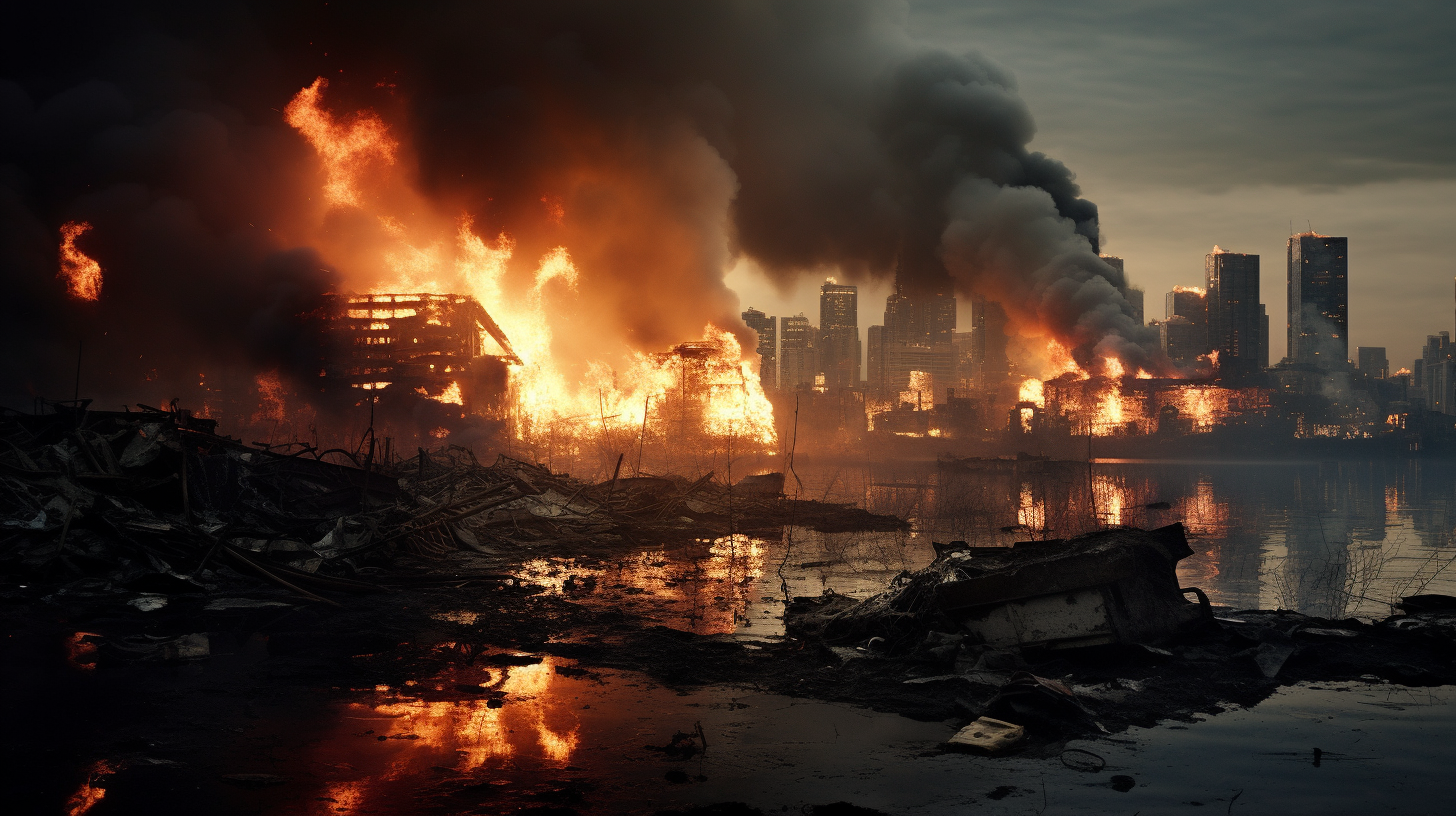The city throbs with an unrelenting fever, its concrete and steel suffused with the heat of a thousand suns. The blighted sun scorches the sky, a relentless overseer to the asphalt wasteland below. In this crucible of climate calamity, we find a story not only of thermal extremes but of heated human emotions erupting into the open. Urban Heat Islands, once a term bounded by scientific discourse, have breached the confines of academia to become a lived, searing reality in the lives of the city dwellers. “Boiling Over, When Urban Heat Islands Ignite Social Fury,” is not just an exploration of temperature anomalies, but a dive into the social upheaval fostered in these sweltering conditions.
The streets don’t merely radiate heat; they simmer with discontent and desperation. Each increment in the thermometer readings parallels rising tempers and social unrest. Community leaders tell of escalating tensions, as scorched citizens vie over shrinking pools of relief. Freshwater once flowed freely, but now, rationed and hoarded, it’s more valuable than gold. Electric grids are overloaded, not by demand alone, but further burdened by the collective dread of their failure—blackouts flash across districts like the warning lights of an overtaxed motherboard.
Even the night brings no solace. The heat does not retreat with the sun; instead, it lurks within the fabric of the urban environment, playing a sinister game of hide-and-seek with any coolness that dares to challenge its dominion. Breath becomes a hot, burdensome commodity. Sleep, a fitful and sweaty chore, rather than a respite. It’s here, in these restless dark hours, that the community’s unease ferments, giving rise to a new day’s anger and frustration.
Against this sweltering backdrop, an explosive social dynamic unfolds. Locals clash with outsiders seeking the sanctuary of city-established relief centers—the Heat Havens highlighted in the recent publication, places where the dystopian reality relent slightly. Sirens are a constant; they slice through the thick air, signaling not just emergency response but the incessant battle between order and chaos. The limited capacity of these havens turns every entrance into an arena, where the strongest or the most cunning claim temporary respite.
An undercurrent of revolt stirs beneath the heated streets, a rebellion against what many perceive as governmental apathy and environmental injustice. The marginalized are pushed to the brink, their plight invisible to the policymakers cocooned in their climate-controlled chambers. The words of a local activist resonate powerfully, “We’re not just fighting the temperature, we’re fighting for our very survival against a system that’s left us out in the heat—literally and figuratively.”
It’s amidst this turmoil that a stark contrast emerges. Technocrats and green visionaries tout their climate adaptability projects—vistas of vertical gardens, reflective pavements, and dreams of urban reforestation—yet for the majority, these remain distant mirages, taunting visions of a cooler world out of arm’s reach. The grim disconnect between these futuristic promises and the immediate, scorching reality provokes a bitter laughter amid the sweat-drenched masses.
The narrative paints a picture of schism and solidarity in equal measure. Within the roiling masses, communities band together, sharing shade and whispers of resistance, pooling resources in a unified front against the encroaching inferno. In these acts of mutual aid, a vestige of human spirit prevails amidst the entropy.
As the city burns on, we witness more than the fiery orb above us; we see the simmering cauldron of humanity, threatened, tormented but not entirely tamed. The urban heat island is no longer a metaphor but ground zero for social upheaval, with every escalating degree drawing nearer to the boiling point—a moment of reckoning or ruin.
